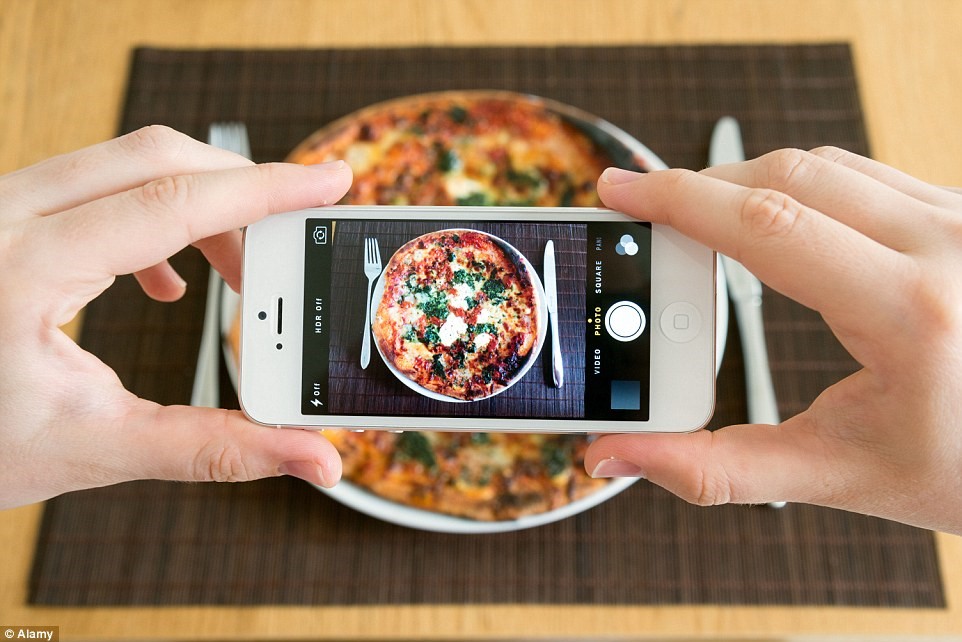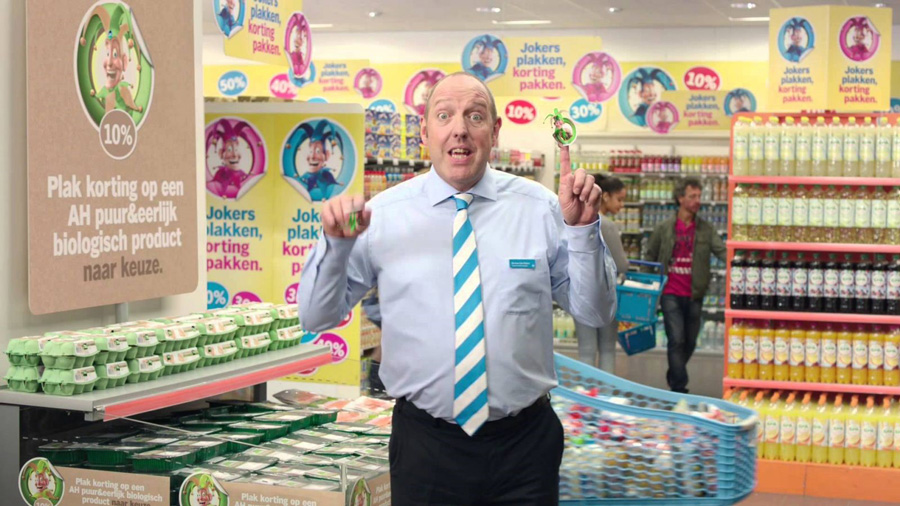8 Great Unpublished Neuromarketing Facts of 2016
Relevant topics Neuromarketing Fundamentals, Research, Archive, Strategy, Advertising, Conversion
The wonderful world of science keeps surprising us. Each month, numerous and diverse interesting ‘did-you-know-that’ insights are published.
We stroll through every marketing, neuroscience and behavioral science journal for the best facts and straight-forward applications. However, as there’s so much worthwhile going on in the large field of science, not every article makes it to NewNeuroMarketing.
We have to be very selective when finding the true gems for you. Nonetheless, we sometimes stumble upon some valuable, surprising or downright funny facts that still deserve sharing.
So let us get some facts straight for you: 8 findings that have not yet made it to NewNeuroMarketing. Use it to your advantage!
- This annoying dining habit may actually be good marketing-wise
- How to optimize charity appeals to self-image
- The devastating effects of damaged packaging
- Peer endorsements vs. celebrity endorsements
- Why nobody likes Oscar-winners
- People now turn to their phones and tablets during commercial breaks. Should advertisers worry?
- How arrogance can benefit for your brand
- Why men with short index fingers buy bigger cars
1. This annoying dining habit may actually be good marketing-wise
We all got one; that friend who can’t seem to eat a meal without first taking a food picture to post on Instagram.
Surprisingly, this annoying intermezzo can actually increase consumer attitudes and taste evaluations. How this works? An active momentary delay (e.g. taking a picture of your full plate) before consumption can positively influence the consumption experience. The joy of anticipation makes the meal taste better. This effect only works for enjoyable consumption experiences, like snacks and treats.
Taking a picture of healthy food will not have the same effect. But good news, there is a way to create the same positive effect. Tell your customers that others choose the healthy options, ask them to make a picture of their food and voilà: they will love your food!
Tip: Create in-store signals like ‘Like your meal, make it a memory’, or ‘Share a photo of your favorite food and get a discount on your next order’. This will give the consumption experience a boost!

Coary, S., & Poor, M. (2016). How consumer-generated images shape important consumption outcomes in the food domain. Journal of Consumer Marketing, 33(1), 1-8.
2. How to optimize charity appeals to self-image
“Am I attractive? Am I successful? Am I intelligent?”
Our daily stream of thoughts is filled with questions such as these. But did you know that the way in which we compare ourselves to others predicts the willingness to give?
Seeing yourself as better off than your friend/classmate/neighbour/a guy walking on the street (downward comparison), will make you more big-hearted and cooperative. However, thinking that you are worse than everyone (upward comparison) makes you more ego-driven and competitive.
So how can charities put this knowledge to work? Downward comparisons (e.g., feeling better than others) will make you give more when a charity highlights the benefits for others. In this case we give, because we want to be a better person and to give back.
It is also possible to make people with upward comparisons (e.g., feeling worse than others) give more. In this case, focus on how giving benefits the self (for instance, because they will receive a gift for donating), and they will donate for compensating their inferior position.
It’s vital to think about which route of comparison is most likely in your target audience and media context. Do they belief in general that they are better off or worse? Emphasize respectively the benefits to others or oneself and make more money for your charity!
Schlosser, A. E., & Levy, E. (2016). Helping others or oneself: How direction of comparison affects prosocial behavior. Journal of Consumer Psychology.
Newneuromarketing is looking for new authors! Are you up for the job?
Send us an e-mail at tim@newneuromarketing.com to become an author and start spreading knowledge.
3. The devastating effects of damaged packaging
Did you know packaging imperfections could have such a big effect on your brand?!
8 out of 10 shoppers leave a product cold-shouldered when its packaging is damaged. Not very surprising.
However, more surpringly, 6 out of 10 shoppers rejected the brand entirely when there was just a single damaged unit. Packaging impairment even has major effects on brand trust. The slightest damage dropped trust ratings from an average of 73% to 41%. This behavior is mainly an issue when consumers lack attention, as in a supermarket.
These effects all have to do with the so-called contagion effect. Us human beings all share the tendency to protect ourselves from health and safety threats. Damage implies that there could be a safety risk and that someone else has touched it. If an item has been touched by someone else, we evaluate a product more negatively.
As a retailer, it pays off to keep an eye open for signs of broken packages. The damage may be much more severe than just one product.
White, K., Lin, L., Dahl, D. W., & Ritchie, R. J. (2016). When Do Consumers Avoid Imperfections? Superficial Packaging Damage as a Contamination Cue. Journal of Marketing Research, 53(1), 110-123.
4. Peer endorsements vs. celebrity endorsements
Compare a celebrity-endorsed ad from ‘Blokker’ with Sarah Jessica Parker against the ‘Albert Heijn’ ads with Harry Piekema, reminiscent of our next-door neighbor. Which endorsement do you expect to carry the most credibility? Well, research found out that peer endorsers are more effective and way more credible than celeb endorsers. Are you surprised?
Celebrities are often used to improve brand recognition, brand recall and spillover effects of celebrity image into brand image. They draw your attention to the television and are often incredibly attractive. However, this doesn’t always work in the advertiser’s advantage. Viewers tend to automatically compare themselves with the celebrities, which leads to a temporary drop in self-esteem, which spills over to the brand. Besides, celebs are seldom experts. They further decrease credibility in the case they perform in different ads, and it is possible that don’t fit the brand image well.
In contrast, peer endorsers resemble a target audience in appearance, cultural background, values and demography. This will help your customers to compare themselves with the peer endorser. This perceived attractiveness and similarity spark positive attitudes towards the brand.

Munnukka, J., Uusitalo, O., & Toivonen, H. (2016). Credibility of a peer endorser and advertising effectiveness. Journal of Consumer Marketing,33(3).
5. Why nobody likes Oscar-winners
Being praised is not the same as being liked.
Oscar-winning films do often not stand out in commercial success. We are not always the biggest fans of Grammy award winners. And the ‘best product of the year award’ doesn’t always go to the sales record breaker.
Creativity is one of the main factors for being praised, but not for being liked. When selecting winners, we will rely more on socially agreed elements such as the product’s creative authenticity. We seem to love ‘creative control’ only when awards are at stake.
While creative authenticity may reap some rewards, it doesn’t make people actually like the movie, music, art or commercial better. Liking fully flows from experience; the customer will ignore peripheral information, such as the development of the product and the amount of creative control. The enjoyment of the product is the only thing that matters for liking.
Why are Oscar-winning movies seldomly as much embraced by the wider audience as by artsy critics? Now we know.
Valsesia, F., Nunes, J. C., & Ordanini, A. (2015). What Wins Awards Is Not Always What I Buy: How Creative Control Affects Authenticity and Thus Recognition (But Not Liking). Journal of Consumer Research, ucv093.
6. People now turn to their phones and tablets during commercial breaks. Should advertisers worry?
It’s Tuesday night. You come back home from a long day at work. Automatically, you turn on the TV, making sure you didn’t miss anything on Facebook and check your personal email on your iPad.
28% of time spend on online media is media multitasking, also known as multiscreening. Surrounding yourself with multiple devices at the same time has an effect on brand attitude, message attitude and purchase attitude. The recognition of brand became even harder, which led to more negative brand attitudes.
However, there are not only negative aspects of multiscreening. It seems to decrease the amount of counterarguments generated by viewers. So, people forgot about the aspects why NOT to buy the advertised product. This led to less resistance and more positive brand and ad attitudes. Bottom line: better purchase intentions.
Want to benefit from the multiscreening effects? Change your way of advertising! Make your ads unexpected and novel. A change in environment will also lead to a positive effect on brand evaluation and recognition. So, market yourself a way through the world of multiscreening!
Segijn, C. M., Voorveld, H. A., & Smit, E. G. (2016). The underlying mechanisms of multiscreening effects. Journal of Advertising, 1-12.
7. How arrogance can benefit for your brand
If I say ‘The best or nothing’, you say Mercedes Benz. What do you think of ‘It could only be Heineken’? And who doesn’t know all the cocky iPhone slogans? ‘This is only the beginning’, ‘The only thing that’s changed is everything’, & ‘The biggest thing to happen to iPhone since iPhone’.
If I ask you to name a car-, beer- or phone brand, odds are that these brands are ‘top of mind’. Arrogance seems to work.
Social rejection is key for displaying arrogance. You would expect people to turn on one’s heels. Nothing is further from the truth. Social rejection motivates individuals to conform, change their attitudes and work harder. This results in strategic consumption, choosing products that are symbolic for their rejecters. You want to belong with the special ‘ingroup’ of luxury, so you’ll buy whatever the brand stands for.
But be careful! Don’t exaggerate. There are numerous examples that boasting doesn’t have the intended effect. Pride becomes before a fall, because some people are experiencing self-threat due to all the perkiness and narcissism. Victoria’s Secret slogan ‘The perfect body’ – a reaction to Dove’s Real Beauty campaign – was dripping with arrogance and didn’t went down to well with the public. So, it didn’t take too long to before they changed the slogan in ‘A body for every body’.
So, are you the brand with self-assured customers? A little more arrogance won’t hurt!

Munichor, N., & Steinhart, Y. (2016). Saying no to the glow: When consumers avoid arrogant brands. Journal of Consumer Psychology, 2(26), 179-192.
8. Why men with short index fingers buy bigger cars
Scientists have recently discovered something remarkable. There exists a relation between testosterone and buying behavior. Baby boys that are highly exposed to testosterone in their mother’s womb will invest more time and energy in mate-seeking and mate-keeping behavior when they are adults. How do they do this? They will blow their money on expensive and romantic gifts, like watches or the newest clothes. Everything to acquire mates, but also to make sure they won’t run away.
For women it is the other way round. They will wear more make-up, jewelries and stylish clothing when they are exposes to relatively small doses of testosterone.
But how do you know who fits in this category? Well, it’s relatively simple. Just check the length of the index finger. The shorter, the more testosterone.
Nothing really practical for the marketers among us, just a fun good-to-know! And for the girls and guys that are looking for more than one night of fun: check those hands first!
Nepomuceno, M. V., Saad, G., Stenstrom, E., Mendenhall, Z., & Iglesias, F. (2016). Testosterone at your fingertips: Digit ratios (2D: 4D and rel2) as predictors of courtship-related consumption intended to acquire and retain mates. Journal of Consumer Psychology, 26(2), 231-244.
Further Reading
-
The 5 Latest Neuromarketing Insights of 2016 Q1
Do you recognize this feeling while you’re walking through the Nespresso brand store? Everything seems to be in perfect harmony. The colors, counters, even the delicious smell of coffee. Everything just ‘feels’ perfect.


